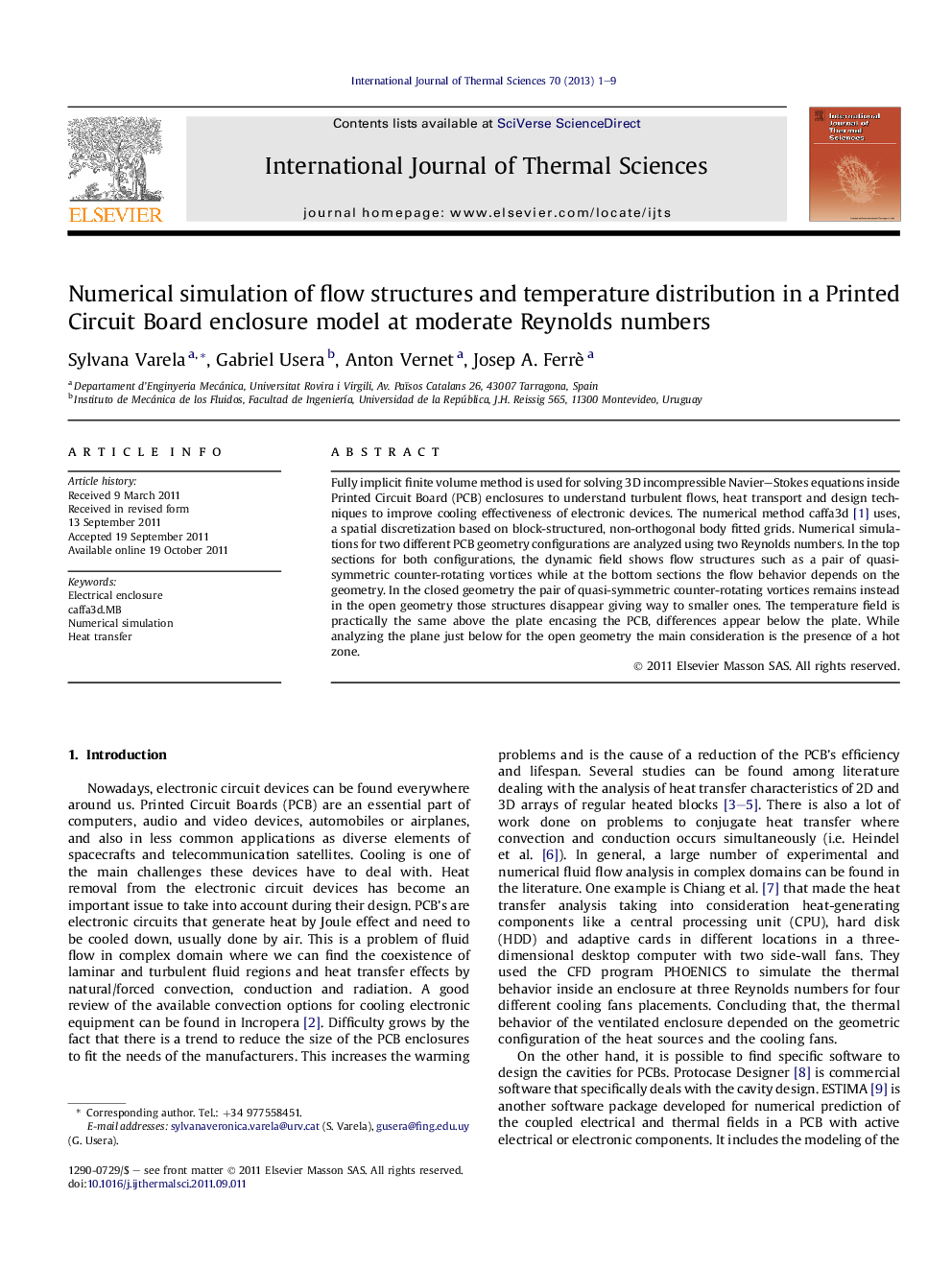| کد مقاله | کد نشریه | سال انتشار | مقاله انگلیسی | نسخه تمام متن |
|---|---|---|---|---|
| 668356 | 1458752 | 2013 | 9 صفحه PDF | دانلود رایگان |

Fully implicit finite volume method is used for solving 3D incompressible Navier–Stokes equations inside Printed Circuit Board (PCB) enclosures to understand turbulent flows, heat transport and design techniques to improve cooling effectiveness of electronic devices. The numerical method caffa3d [1] uses, a spatial discretization based on block-structured, non-orthogonal body fitted grids. Numerical simulations for two different PCB geometry configurations are analyzed using two Reynolds numbers. In the top sections for both configurations, the dynamic field shows flow structures such as a pair of quasi-symmetric counter-rotating vortices while at the bottom sections the flow behavior depends on the geometry. In the closed geometry the pair of quasi-symmetric counter-rotating vortices remains instead in the open geometry those structures disappear giving way to smaller ones. The temperature field is practically the same above the plate encasing the PCB, differences appear below the plate. While analyzing the plane just below for the open geometry the main consideration is the presence of a hot zone.
Journal: International Journal of Thermal Sciences - Volume 70, August 2013, Pages 1–9